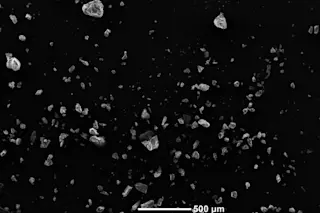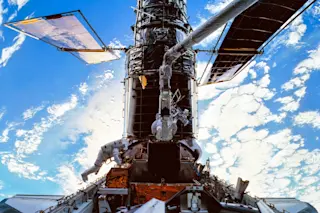In July an object resembling a giant mushroom screamed through the atmosphere, surviving 1,000-degree temperatures and 20-g forces before plunging into waters off North Carolina. The splashdown concluded a successful test of an inflatable heat shield that could one day help astronauts land on Mars. Not bad for what is essentially a set of inner tubes wrapped in fabric.
Heat shields, or aeroshells, protect spacecraft—and those on board—from the extreme heat and pressure of entering an atmosphere at high speed. Traditionally, aeroshells have been made of solid materials. But in spaceflight, weight is money, and these heavy materials place limits on the payload. Back in the 1960s, NASA engineers came up with the idea of inflatable aeroshells, which would be extremely light and could be stowed until landing. The idea was far ahead of its time: It was not until 2003 that the agency had the know-how and funding to actually build one.
In July’s test, principal investigator Neil Cheatwood and his team from NASA’s Langley Research Center launched a payload capsule and a deflated aeroshell 280 miles up and then tracked them as they fell back to Earth. Over three minutes, nitrogen gas was pumped into seven concentric rings to form a mushroom-shaped shield 10 feet in diameter. A thermal blanket made of woven ceramic fabric, furnace insulation, and Kevlar covered the rings as they whizzed through the atmosphere. The shielded capsule survived the 10-minute descent unscathed.
Cheatwood’s team now wants to build aeroshells large enough to ferry cargo back from the International Space Station. Down the road, the technology could allow large spacecraft, robotic and manned, to pierce through the Martian atmosphere and land on the Red Planet.















